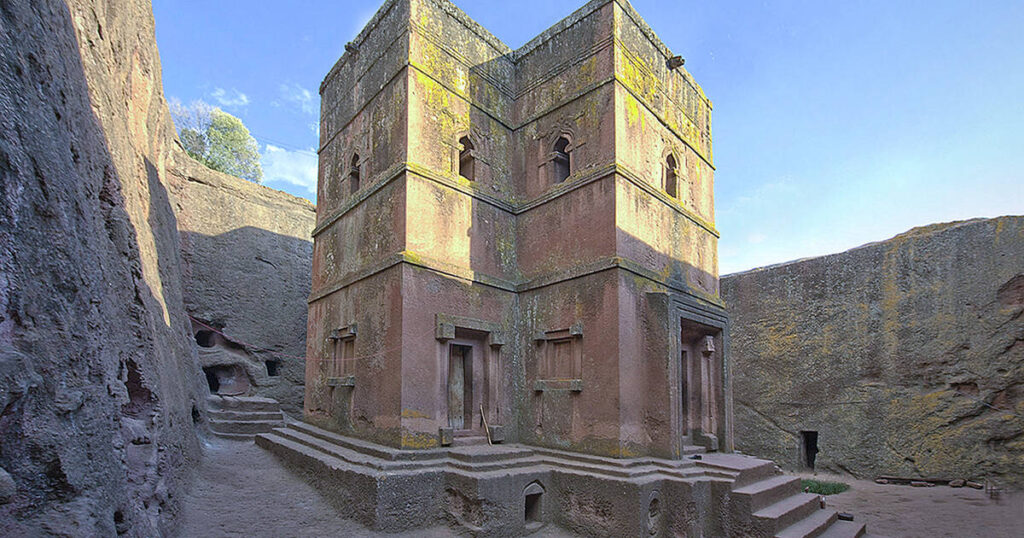Nestled in the highlands of Ethiopia, the Rock-Hewn Churches of Lalibela are a testament to human ingenuity and spiritual devotion. These remarkable structures, carved directly into the rock, have stood for centuries as a symbol of Ethiopia’s rich religious heritage. For travelers seeking a unique blend of history, culture, and breathtaking architecture, Lalibela offers an unforgettable experience.
What to See
The Rock-Hewn Churches of Lalibela are a collection of 11 monolithic churches, each with its own distinct design and character. The most famous of these is the Church of St. George, known locally as Bete Giyorgis. This church is shaped like a cross and is often considered the most visually striking of the group. As you explore, you’ll find that each church is connected by a series of tunnels and narrow passageways, adding to the sense of mystery and wonder.
Inside the churches, you’ll discover intricately carved interiors, with columns, arches, and religious symbols etched into the stone. The dimly lit interiors, illuminated by small windows, create a serene and contemplative atmosphere. Be sure to visit during one of the many religious festivals, such as Genna (Ethiopian Christmas) or Timkat (Epiphany), when the churches come alive with vibrant ceremonies and processions.
A Bit of History and Interesting Facts
The churches were commissioned by King Lalibela in the late 12th and early 13th centuries. According to legend, King Lalibela was inspired to create a “New Jerusalem” after a pilgrimage to the Holy Land. The construction of these churches is said to have been aided by angels, who worked alongside human laborers to complete the monumental task.
One of the most fascinating aspects of the churches is their construction method. Instead of being built from the ground up, they were carved from the top down into the volcanic rock. This technique not only showcases the incredible skill of the craftsmen but also provides natural insulation, keeping the interiors cool in the hot Ethiopian climate.
Getting There and Tips for First-Time Visitors
Lalibela is accessible by air, with daily flights from Addis Ababa, the capital of Ethiopia. The Lalibela Airport is about 25 kilometers from the town, and taxis or shuttle services are available to take you to your accommodation. For those who prefer a more scenic route, buses and private cars can be hired, though the journey can be long and bumpy.
When visiting Lalibela, it’s important to respect local customs and traditions. Dress modestly, especially when entering the churches, and be mindful of the religious significance of the site. Hiring a local guide can enhance your experience, providing valuable insights into the history and cultural importance of the churches.
For first-time visitors, it’s recommended to spend at least two days exploring the churches and the surrounding area. This allows ample time to appreciate the intricate details of each church and to participate in any ongoing religious ceremonies. Don’t forget to try the local cuisine, which includes dishes like injera (a sourdough flatbread) and doro wat (a spicy chicken stew).








